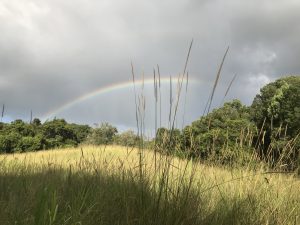What is a Master Planned Community (MPC)?
Places like North Lakes in QLD, Willowdale in South West Sydney and Merrifield north of Melbourne are all Master Planned Communities. An MPC is designed from it’s inception to include most services and facilities needed in a residential community. These are major new housing developments set in the outskirts of the capital city, which house 1,000s of homes and new residents.
An infill site may be as little as 2 or 3 newly created blocks, often in an area closer to the city or the coastal beaches and existing infrastructure of shops and transport.
Let’s take a closer look at a few Master Planned Communities in SE Qld.
Aura, located south of Caloundra on the Sunshine Coast, is a $5 billion development that began in 2010. It will see 20,000 homes built over 30 years, housing 50,000 people, essentially becoming a new ‘city’, the size of Gladstone.
The other large, new MPC on the Sunshine Coast is “Harmony”, located near the Bruce Highway at Palmview. Harmony is developed by AVID and will deliver about 5000 homes over the next 10-15 years with 12,000 residents on a 378-hectare site.
Between Gold Coast and Brisbane is Yarrabilba, which will accommodate over 45,000 residents, 17,000 dwellings and is supported by a town center, neighborhood hubs and community, education and employment facilities all on 2029 Hectares.
There are dozens of these MPC developments being built in every State.
As with MPCs that began well over 10 years ago, like North Lakes and Springfield Lakes, MPCs are designed so residents can live, work, and play within the new community. These large parcels of land are only found a long way ‘out of town’, causing them designed to be self-sufficient residential communities that have every amenity a homeowner ever requires. Planned communities include schools, parks, medical facilities, walkways, sports complexes, shopping malls and other various facilities.
Driving through an MPC the biggest thing you will notice is the tiny sizes of the blocks of land, with guttering from one house almost touching the guttering of the house next door. For example, Harmony blocks start at 250m2 with the occasional ‘large’ block at 400m2.
They are designed for maximum density (& maximum profit), with each new stage often a mix of tiny terrace homes on 180m2 to a mix of small and larger house lots, with very narrow streets and one-way lane ways.
The biggest difference between a Master Planned Community and an infill Estate is:
An MPC does NOT have to adhere to the local Town Plan guidelines; they have their OWN Master Planned guidelines. In Harmony for example, they have in the current stage of release, 19 residences available in a space under normal town planning laws you would only be able to build a max of 8-9 houses, perhaps less. These MPCs are a long way from an existing CBD, so the land size would normally increase to be around 600 or 800m2 minimum lot size, not 180-400m2
So what’s the attraction?
A large benefit is that planned communities are extremely well-governed. The rules and responsibilities are well laid out in advance – and everyone knows them. Often which side of the house your garage and driveway are positioned and your outdoor area is located, is predetermined.
If you want a straw bale house, then don’t buy in an MPC.
Approvals for your new home is made by the developer of the MPC, not Council or an independent inspector and must strictly adhere to the covenant of the MPC. There are guidelines of whether your block can have a single or 2 story house on it, even what size plants in the front yard.
What’s the downside to an MPC?
The biggest downside is the size of your land, or complete lack of size and space. If you need/want to sell while they are still promoting subsequent stages, you will have problems selling for a high price. Buyers know that they can buy brand new land and build their own house for the same or less money.
Essentially the value of your home is controlled by the value of the newly released land.
Who doesn’t like having everything shining and brand new?
The other thing you will notice in an MPC is that they do not have to adhere to Council guidelines for road width, and often to maximize the land, will have quite narrow streets. In the terrace lots, they will be extremely narrow and only one way. To compensate for minimal front and back yards, these MPCs have huge parks in them, otherwise the mass of houses and rooftops would run the risk of looking like “Slumville” or a Shanty Town. Another downside is that these newly built homes are often bought by investors and can have a greater than 50% rental occupancy rate.
Infill Estates
Good old fashioned way to buy land and build a house. These new housing estates ARE subject to the Council Town Plan. They have to adhere to Council’s minimum lot size, which in many places starts around 400m2, closer to the city it may be 350m2. The further out of ‘town’ you go, often this size get bigger, 600m2 and 800m2, until you hit the rural – residential zoning and then you are into acreages. You can build any type of house that you want, as long as it is within Council guidelines (size, set back etc).
Roads have to be a certain width, with parking and turn around space. Depending on the size of the new Estate, it may have a park, or a green area, but the very small subdivisions won’t have this. Many of the Estate are ‘infill’ areas, large lots nearer to existing infrastructure being cut up.
What’s the attraction to these Estates?
Their land size and often their location close to towns and existing transport, shops or beaches. The downside is cost. Land in an MPC is quite ‘cheap’ as it may only be 250m2 for eg. $229,000 whereas an infill site the minimum size might be 400m2 and cost $380,000 or more because of it’s location. However, unlike a house in an MPC, you are not as ‘controlled’ by the pricing when you go to sell, and being much smaller developments, there won’t be an endless supply of vacant land to buy keeping the value of your home down.
Where is the grass greener? 
That’s an answer that only home buyers can give. Do you like the brand new self-sufficient housing estates, with a tiny yard, but huge parks, or do you prefer to be closer to town or the beach and have a bigger yard, in lieu of a park? In the end, if just all may come down to your budget.
For more information on this article or anything property related, contact us via 1300 66 77 89 or via email here.
Karin is a passionate property investor who owns multiple investment properties. She has spent many years researching property, law and literature in her previous job roles with McCullough Robertson Lawyers and QLD Libraries. Karin’s is head of Research at Real Property Advice, not just focusing on properties, but regions, suburbs, social trends, industries, infrastructure and demographics.

